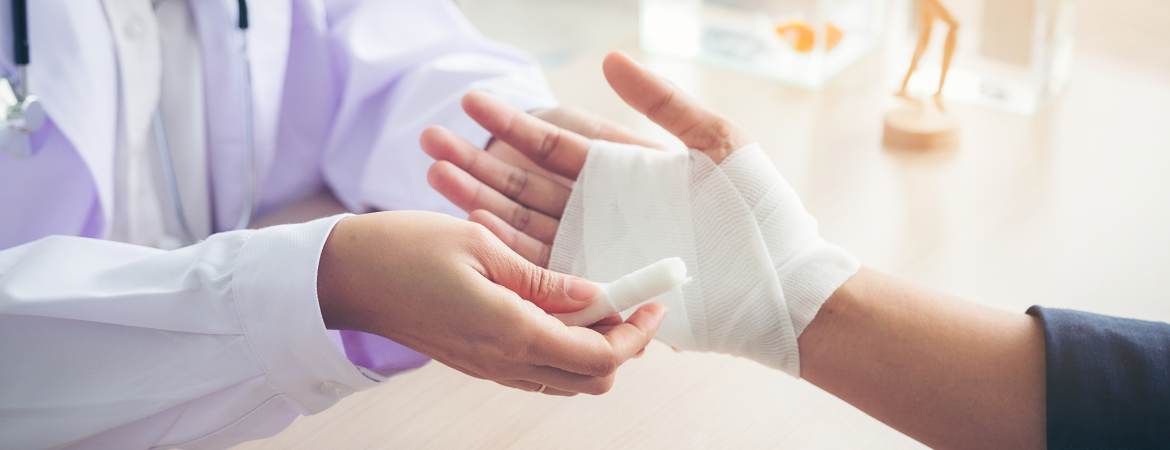
First aid for burns at home
Burns are extremely common in everyday life and can happen to anyone, at any time. When tissue is damaged by flames, extremely hot water, harsh chemicals, electricity, a hot stove, hair straightener or radiation - a burn develops.
Any burns or scalds should be treated with first aid as soon as possible. This will help to keep skin damage to a minimum. With kids and elderly people at home, the chances of burns and scalds are common.
There are three levels of burns you should know about.
- First degree. The outer skin becomes reddened, painful and swells slightly, but usually without blisters. There’s some pain, similar to a sunburn ouch which is a first-degree burn. The good news is that the pain commonly subsides within 48-72 hours and there’s usually no scarring.
- Second degree. The epidermis is damaged, and the skin's outer layer has been burned. The burn can be excruciatingly painful, and blisters are almost certain to pop up. The burnt area may be tender, blotchy and swollen. Blisters can turn liquidy and ooze out.
- Third degree. Depending on the situation, the skin will be charred or white. The damage to the epidermis and dermis (the top two layers of skin) is permanent and may leave scarring.
Time is of the essence with a burn, so make sure you have a first aid kit handy. Looks can be deceiving and a burn may look small and harmless but could be more intense below the skin’s surface.
First aid
- Immediately move away from the flame or source of heat.
- Douse the fire safely.
- Help the person to "stop, drop and roll" to put out the flames if necessary.
- Remove any jewellery, belts or clothing that’s too tight. Burns can swell incredibly quickly.
- Next, take off any hot or burnt clothing, and if clothing is stuck to the skin, cut or tear around it.
- Use paracetamol or ibuprofen to relieve the pain.
- Use a blanket to keep yourself or the person warm but avoid putting them on the site of injury. Keeping warm will help you avoid hypothermia (when your body temperature falls below 35°C). This is a risk when cooling a large burnt area, especially in young children and the elderly.
For second-degree burns
- Soak for 10 to 15 minutes in cool water.
- If you don't have access to running water, use cold compresses or damp cloths.
- Do not use ice as it can cause a drop in body temperature and more pain and damage.
- Avoid picking at the blisters or applying butter or ointments. This will just cause an infection.
- Apply a sterile, non-stick bandage to the wound and secure it with gauze or tape.
For third-degree burns
- Call an ambulance immediately.
- Cover the wound loosely with a sterile, non-stick bandage, sheet or other material that won’t leave behind any lint.
- Avoid soaking the burn in water. Don’t apply creams or lotions right now. Again, this could trigger an infection.
Takeaway
If the burn has penetrated all layers of skin or shows any of these signs, call an ambulance right away.
- If there are white, brown or black patches on the skin that appear leathery or charred.
- If you or the person is cold, has clammy skin, sweats profusely, has rapid shallow breathing, weakness or dizziness.
- If there are blistering burns on the face, hands, arms, feet, legs or genitals.
Once the burn has healed, wear protective clothing and always wear sunblock when outdoors. This will help to reduce scarring, as the redness from a burn can last for weeks.
References:
- https://www.webmd.com/first-aid/thermal-heat-or-fire-burns-treatment
- https://www.healthychildren.org/English/safety-prevention/all-around/Pages/First-Aid-For-Burns.aspx
- https://www.aad.org/public/everyday-care/injured-skin/burns/treat-minor-burns
- https://www.nhs.uk/conditions/burns-and-scalds/treatment/
Disclaimer
This article is for informational purposes only. Always check with your doctor or medical practitioner about any health concerns, before embarking on any fitness or nutrition programme, and usage of any medication.
